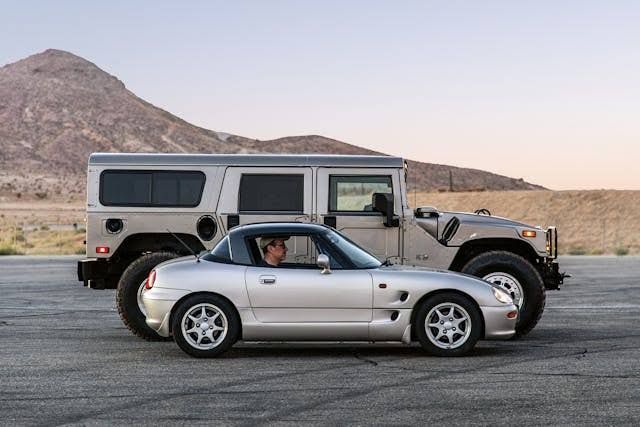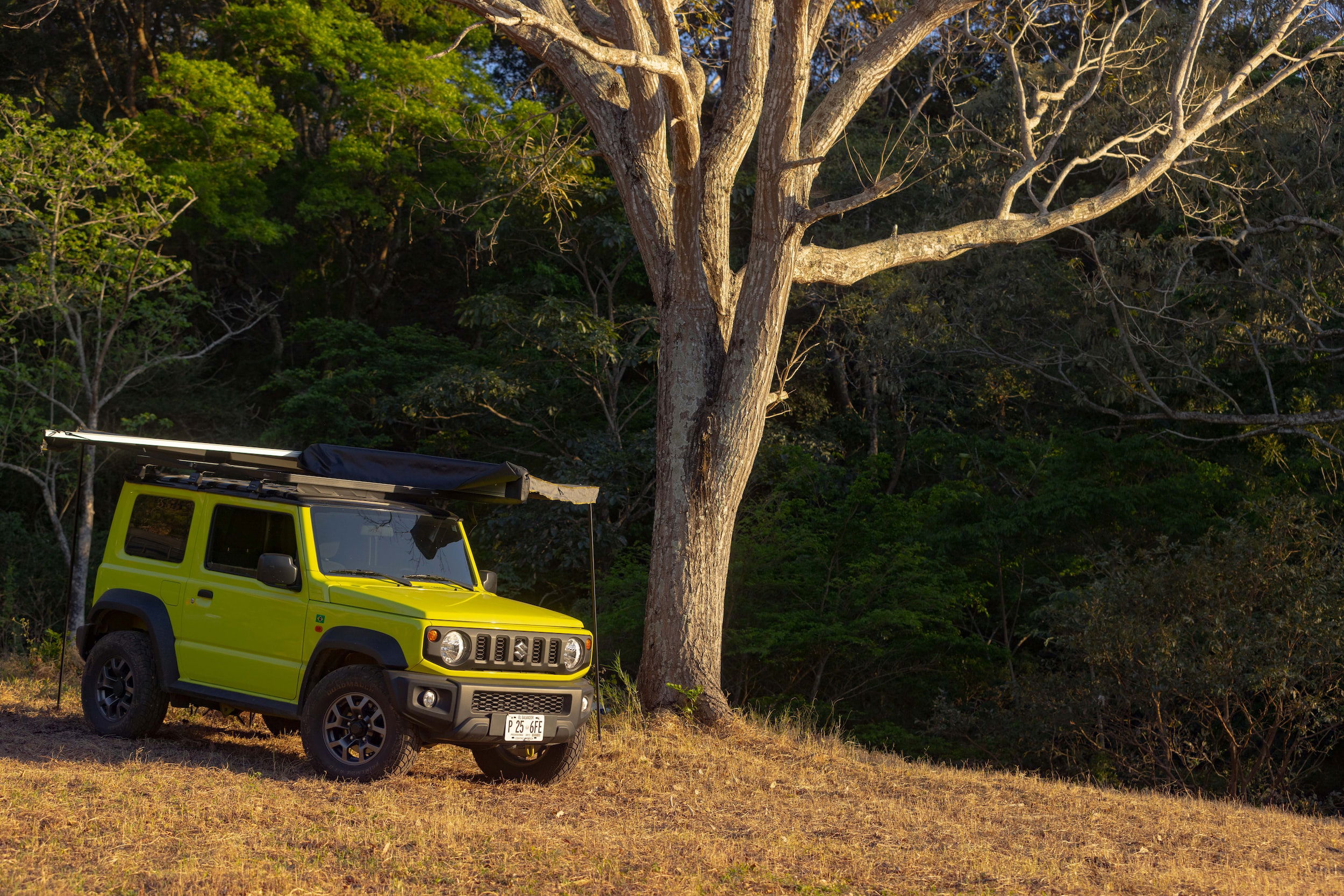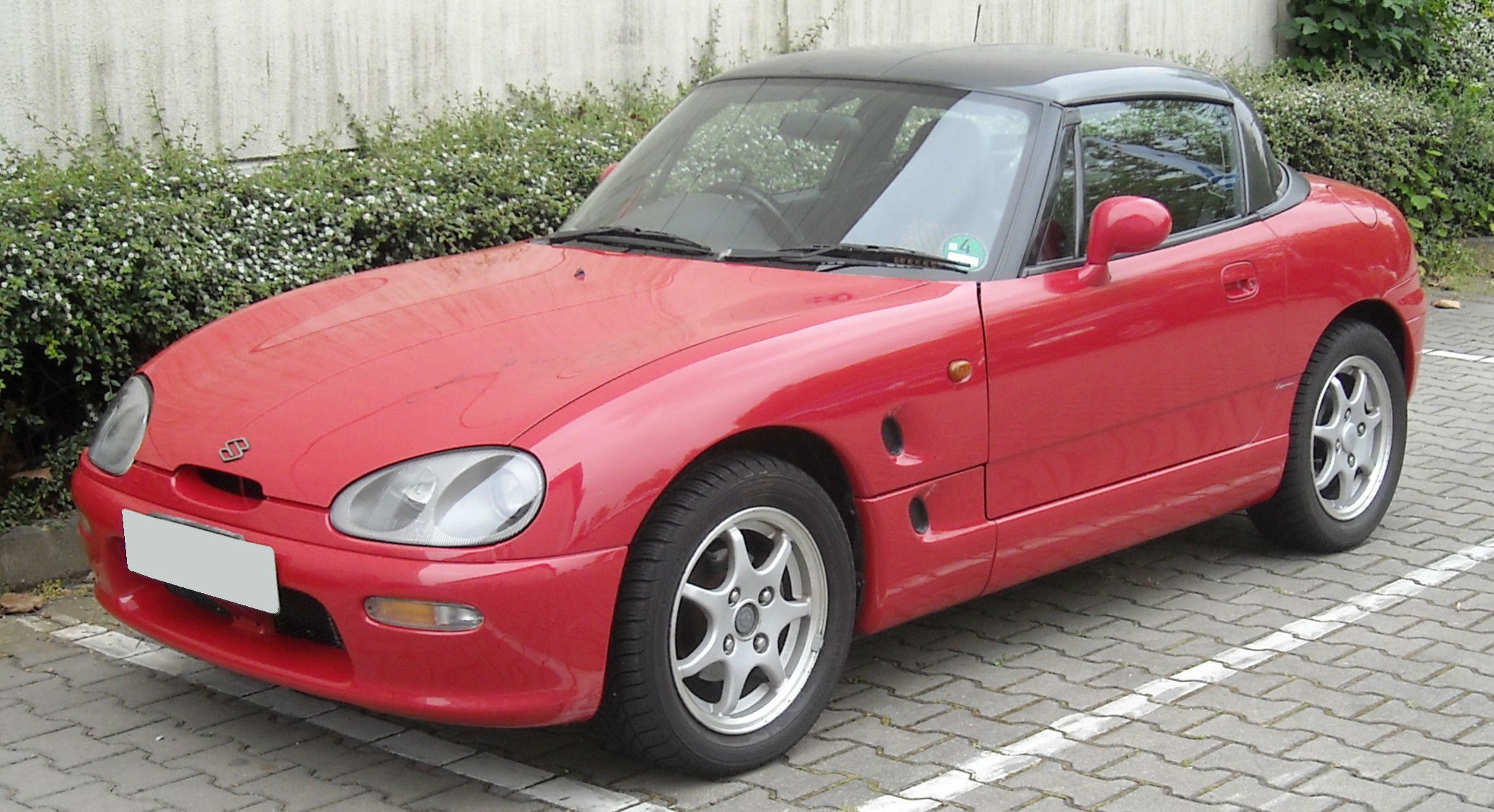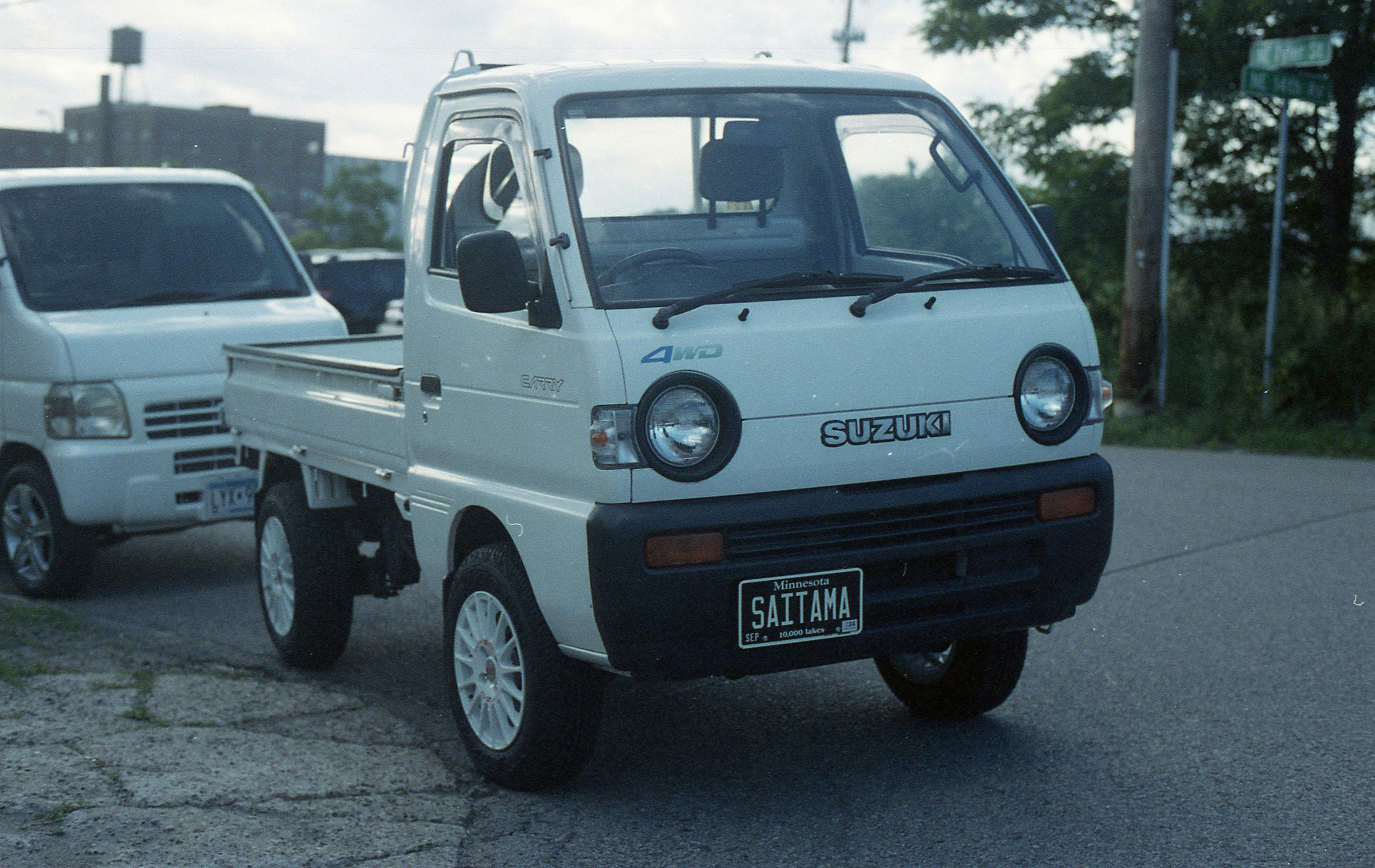The Tiny Cars That Could (But America Won’t Let Them)
Kei cars are like pocket knives on wheels. Tiny, practical, and weirdly capable.
In Japan, they’re everywhere: city runabouts, mini campers, farm trucks, even fire engines. They navigate tight urban spaces, sip fuel like it’s a fine wine, and somehow pack more features into 660cc than some American full-sizers with 6.6L.
But here in the land of the Silverado and Big Gulp, kei cars are treated like toys or curiosities. Why?
The answer lies in a cocktail of cultural preference, regulatory hurdles, and the sheer vastness of American highways, where bigger often feels safer. Yet, as cities grow denser and gas prices more volatile, one has to wonder: Is America missing out on the perfect urban runabout?
Considering their quirky charm and undeniable logic in crowded spaces, Kei cars make sense almost everywhere—except, it seems, in the land of the free and the home of the supersized.
Here, we explore the cultural, regulatory, and infrastructural reasons why these micro-marvels thrive in Japan (and much of Asia), but remain fringe weirdos in the U.S.—despite America’s growing appetite for affordable, efficient, and charmingly quirky transportation.
What The Hell Is A Kei Car?

Born from the ashes of post-WWII Japan, kei cars (short for keijidōsha, or "light automobile") were engineered as an affordable mobility solution for a nation rebuilding itself.
In the late 1940s, with resources scarce and streets narrow, the Japanese government created strict regulations to encourage small, fuel-efficient vehicles.
The original rules capped engines at a modest 360cc (smaller than some motorcycle engines) and overall dimensions at a comically tiny 9.8 feet long and 4.2 feet wide. Over time, those limits expanded slightly. Today’s kei cars max out at 660cc and roughly 11 feet long, but the spirit remains the same: minimalism meets maximum utility.
The thing about these micro-machines is that they aren’t just cheap to buy; they’re cheap to own, thanks to tax breaks, lower insurance costs, and miserly fuel consumption.
Yet don’t let their size fool you. Modern kei cars pack turbocharged engines, AWD systems, and even convertible or van configurations. Apparently, innovation thrives within constraints.
From the iconic Honda N360 to the cult-favorite Suzuki Cappuccino, kei cars have become a symbol of Japanese ingenuity. So why hasn’t the world fully embraced them? That’s a story of cultural preference, infrastructure, and America’s love affair with excess.
Small But Mighty: The Incredible Utility Of Kei Cars

At first glance, kei cars look like they belong in a toy store—until you see what they can do. These tiny titans of efficiency punch far above their weight, transforming into everything from mini campers to rugged off-roaders, as if bent on proving size has little to do with capability.
Take the Suzuki Jimny, a kei-class 4x4 that defies physics. With a footprint smaller than a Fiat 500, it scrambles up mountain trails and plows through mud like a shrunken Land Rover, thanks to its lightweight body and clever all-wheel-drive system.
Then there’s the Honda Acty Truck, a micro-pickup with a dump bed so handy that farmers, florists, and DIYers swear by its ability to haul far more than its dimensions suggest.
But the real magic happens when kei cars become homes. Japanese ingenuity has birthed an entire subculture of kei camper conversions, where vans like the Daihatsu Hijet are outfitted with pop-up roofs, fold-out kitchens, and even compact toilets—turning 11 feet of space into a surprisingly functional road-trip companion.
Meanwhile, kei dump trucks, with their comically small beds and cartoonish proportions, are workhorses on narrow Japanese streets, delivering goods in cities where full-size trucks simply wouldn’t fit.
What makes kei cars so special isn’t just their size but their refusal to compromise. They’re cheap to run, easy to park, and endlessly adaptable, proving that you don’t need bulk to be brilliant. In a world obsessed with bigger, faster, and more, kei cars are a masterclass in doing more with less.
America’s obsession with massive trucks might never fade, but somewhere in Japan, a turbocharged 660cc van is out there, hauling, camping, and off-roading—all while fitting into a parking spot the size of a closet.
How Japan Embraced the Tiny Commute—and We Went the Opposite Way

Post-WWII Japan faced a perfect storm: a battered economy, scarce resources, and densely packed cities. The government responded by creating the kei car.
They offered affordable mobility without overwhelming Japan’s narrow roads or limited parking spaces. As cities rapidly modernized, kei cars became essential urban companions, thanks to smart planning laws and incentives like tax breaks and relaxed parking requirements in rural areas.
Meanwhile, the U.S. went in the opposite direction. Postwar prosperity, vast land, cheap fuel, and the expansion of suburbs under policies like the 1956 Interstate Highway Act encouraged bigger vehicles and longer commutes.
Car culture took off—buoyed by advertising that equated size and horsepower with freedom and status. The average American household increasingly favored large sedans, pickup trucks, and eventually SUVs.
Japan’s urban design—compact, transit-friendly, and walkable—further reinforced kei car use. In contrast, American cities pretty much prioritized cars over people, as evidenced by the sprawling development patterns that made owning a full-sized vehicle a necessity.
Japan also maintained high fuel prices and rigorous vehicle inspections, pushing consumers toward smaller, more efficient cars. The U.S., by contrast, kept fuel cheap and emissions regulations looser for trucks and SUVs.
Today, kei cars make up over a third of new car sales in Japan, while U.S. buyers continue gravitating toward ever-larger vehicles. Japan’s compact commuting culture wasn’t just a product of constraint but an intentional pivot toward efficiency.
America, flush with space and oil, embraced bigness as a symbol of identity. The result? Two industrialized nations with wildly different takes on how to get from A to B.
America’s Kei Car Problem
Kei cars seem like a no-brainer: cheap, efficient, easy to park, and cuter than a basket of puppies. So why haven’t they taken off in the U.S.?
Blame the three-headed beast of federal crash regulations, cultural hang-ups, and a distinct lack of enthusiasm from automakers.
First, safety. U.S. crash standards are notoriously strict, and rightly so. But kei cars, designed for Japan’s narrow, low-speed streets, simply aren’t built to survive a collision with a Ford F-150 doing 75 mph on I-95. Federal rules require things like reinforced crash structures and advanced airbags—great for safety, but terrible for keeping cars light and cheap.
Second, there’s the stigma. In America, bigger still equals better. Small cars? Those are for people who “don’t really drive,” right? A kei car pulling up next to a Dodge Ram is like a Yorkie walking into a pit bull convention. There’s a deeply ingrained perception that small means unsafe, uncool, or worst of all—un-American.
Then there's the lack of OEM support. U.S. automakers don’t want to cannibalize their profitable SUV and truck sales by offering tiny, ultra-efficient commuters.
Even Japanese automakers rarely push kei-style models stateside, fearing poor sales and regulatory headaches. Why retool for a niche market when you can keep printing money selling oversized crossovers?
So while kei cars would thrive in crowded cities like New York or San Francisco, where good parking spots are rarer than Bigfoot, they’re trapped in import limbo or quirky YouTube videos.
America could embrace the kei car. But until the laws, roads, and egos shrink, these pint-sized wonders will remain a great idea—just not a great fit for the land of excess.
Kei Car Resurrection

They’re small, strange, and barely faster than a bicycle—but kei cars are enjoying a second life in America, thanks to a perfect storm of nostalgia, loopholes, and online fame.
Under the 25-year import rule, enthusiasts can legally bring in these Japanese micro marvels, dodging strict U.S. safety and emissions regulations. The result is a wave of boxy vans, tiny sports cars like the Autozam AZ-1, and rugged kei trucks showing up at car meets and Instagram feeds across the country.
A big boost came from YouTube and TikTok, where creators document the quirks of their RHD (right-hand-drive) kei rides—sliding doors, pop-up roofs, three-cylinder engines that sound like angry sewing machines. Internet fame has turned these vehicles from oddities into cult icons, especially among younger enthusiasts priced out of traditional classics.
But it’s not all about vibes.
Kei trucks like the Suzuki Carry and Honda Acty have become rural workhorses across the U.S. Their compact size and 4WD capability make them perfect for small farms, vineyards, and off-grid adventuring. They're exempt from some road laws when used off-highway, so they're a tool and a toy.
Then there’s the kei camping scene. Microvans like the Daihatsu Hijet or Subaru Sambar are getting converted into minimalist overlanders, complete with sleeping platforms, solar panels, and wood-paneled interiors. Think van life, but shrunken down to match your student loan payments.
So while kei cars still face barriers to widespread adoption, they’re no longer relegated to obscurity. Enthusiasts, farmers, and content creators are giving them new purpose—one weird little import at a time.
If We Took Kei Seriously, What Could Change?

Imagine an American city where the default isn’t a 6,000-pound SUV nudging into bike lanes, but a fleet of 1,500-pound kei cars zipping through narrow corridors with ease. If the U.S. embraced kei cars at scale—not as novelties, but as policy-supported alternatives—our urban landscapes could change radically.
First, parking. A kei car is roughly half the footprint of an F-150. If municipalities redesigned parking infrastructure around small vehicles, cities could double on-street capacity, eliminate the need for sprawling garages, and free up land for housing, green space, or—dare we dream—sidewalks wide enough for more than one stroller at a time.
Traffic patterns would shift, too. Kei cars aren’t built for high-speed highway dominance, which aligns better with 15-minute city concepts and low-speed urban zones.
Their widespread use could bolster the case for micro-mobility networks, shared roads where bikes, scooters, and kei cars coexist at human-scale speeds, reducing the violence of traffic and reclaiming the city for people.
Environmental gains go deeper than just gas mileage. Kei adoption could serve as a bridge technology for an America hesitant about EVs.
Their tiny engines already sip fuel; electrified kei platforms would drastically reduce grid strain and battery material demand compared to full-size EVs. Cities could trial hyper-local EV networks using kei-sized vehicles without massive infrastructure overhauls.
Even zoning could change. With less demand for massive arterial roads and parking minimums, planners could prioritize mixed-use developments, walkable blocks, and denser communities. Kei cars would enable urban infill without the congestion penalty.
So, it’s not just about shrinking vehicles but about resizing cities to fit human needs again.